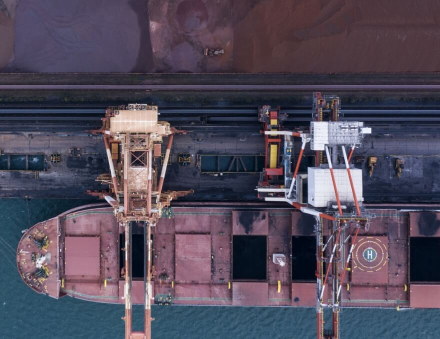

Agricultural Commodities: Let’s Optimize Your Supply Chain Planning
What our customers say about us
The challenge
The supply chain planning puzzle in agricultural commodities is a tough nut to crack. Food ingredient and grain suppliers must deliver products to the market amidst a tumultuous backdrop: changing climate, fluctuating demand, increasing geopolitical conflicts, and rising regulations, to name a few.
Planning teams are tasked with solving the puzzle with tools that offer little insight and are often too rigid for decisions to make major differences in plan quality.
If this sounds familiar to you, know that all is not bleak. Imagine a dynamic solution that takes your worldview and empowers your planners to produce a plan with real-time insight into your KPIs, making your supply chains transparent, traceable, and sustainable. Let’s go over some of your planning team’s challenges.
-
SituationYour supply chain faces constant disruptions due to seasonality, perishability, long lead times, production volatility, climate change, and market shifts. This makes planning complex.
-
ComplicationPlanners lack real-time data and visibility, hindering the ability to dynamically adjust planning windows.
-
QuestionHow can you plan with agility during times of disruption and uncertainty?
-
AnswerA virtual twin is a digital model of your operations, giving you end-to-end visibility of your supply chain. Your planners are equipped with real-time data and can simulate the impact of their decisions even over long-term periods, making planning more resilient to uncertainty.

-
SituationYour planning teams must navigate a complex web of regulations, including quality grading of grain, strict traceability requirements, preservation of origin throughout the supply chain, trade, labor, and sustainability.
-
ComplicationInformation and data related to the different standards are stored in silos and are managed using legacy systems and spreadsheets, increasing inefficiencies and risk.
-
QuestionHow can you ensure your decisions adhere to all necessary regulations?
-
AnswerA single source of truth provides key stakeholders with all the information needed to adhere to regulatory standards, reducing the risk of ingredient recalls, penalties, and helping your organization manage risk effectively.

-
SituationYour trading and supply chain teams have different objectives. While the former prioritizes short-term profits and securing the best deals, the latter focuses on minimizing the impact of disruptions and ensuring the timely supply of ingredients from farm to customer.
-
ComplicationThe pressure to perform creates communication silos. They are judged on different KPIs, and this misalignment exacerbates conflict.
-
QuestionHow do you ensure your teams work in concert to ensure your organization benefits as a whole?
-
AnswerA solution that ensures collaborative planning and enables all stakeholders to see the bigger picture and work towards organization-wide goals, balancing efficiency and profitability.

-
SituationPlanning your agricultural commodity supply chain is a multi-layered puzzle. You have to juggle supply-push and demand-pull grain dynamics, silo management, unpredictable logistics, scheduling of crushing plants, and blending for quality grades.
-
ComplicationSpreadsheets and siloed departments can’t handle the interconnected nature of your agricultural supply chain. This makes it difficult to optimize plans, leading to costly inefficiencies and missed opportunities.
-
QuestionHow can your planners move to a more coordinated and efficient decision-making process across the supply chain?
-
AnswerA comprehensive planning solution that integrates all relevant data (yield forecasts, inventory levels, multimodal logistics networks, market prices) and enables planners to evaluate what-if scenarios can address this complexity.

-
SituationOptimally balancing supply and demand is crucial, but so is adhering to contractual agreements like tonnage commitments or transport contracts. Failing to meet either can result in penalties, further complicating the balancing act.
-
ComplicationYour planners use paper-based tracking or other legacy systems so they lack the visibility to effectively manage the S&OP process. This hinders their ability to meet both operational and contractual obligations.
-
QuestionHow can you include all these constraints into the planning process to achieve optimum results?
-
AnswerAdding constraints as parameters to your planning solution enables you to respond quickly and proactively address potential issues at every stage of your supply chain. This ensures you can make the best decisions to optimize operations while meeting all your obligations.

-
SituationWith increasing pressure on supplying commodities sustainably, you must track relevant metrics – for example, grains of sustainable origin, CO2 impact, fuel usage, etc.
-
ComplicationNot having reliable, standardized data and low visibility across the entire supply chain limits your ability to assess risks, make informed sourcing decisions, and adapt to changing regulations.
-
QuestionHow can you integrate sustainability goals into your decision-making processes while ensuring your supply chain remains efficient?
-
AnswerImplementing a planning solution that integrates sustainability goals and data, supports traceability, and enables you to compare multiple scenarios against all your objectives, supports you in planning sustainably.

-
SituationYour supply chain faces constant disruptions due to seasonality, perishability, long lead times, production volatility, climate change, and market shifts. This makes planning complex.
-
ComplicationPlanners lack real-time data and visibility, hindering the ability to dynamically adjust planning windows.
-
QuestionHow can you plan with agility during times of disruption and uncertainty?
-
AnswerA virtual twin is a digital model of your operations, giving you end-to-end visibility of your supply chain. Your planners are equipped with real-time data and can simulate the impact of their decisions even over long-term periods, making planning more resilient to uncertainty.

-
SituationYour planning teams must navigate a complex web of regulations, including quality grading of grain, strict traceability requirements, preservation of origin throughout the supply chain, trade, labor, and sustainability.
-
ComplicationInformation and data related to the different standards are stored in silos and are managed using legacy systems and spreadsheets, increasing inefficiencies and risk.
-
QuestionHow can you ensure your decisions adhere to all necessary regulations?
-
AnswerA single source of truth provides key stakeholders with all the information needed to adhere to regulatory standards, reducing the risk of ingredient recalls, penalties, and helping your organization manage risk effectively.

-
SituationYour trading and supply chain teams have different objectives. While the former prioritizes short-term profits and securing the best deals, the latter focuses on minimizing the impact of disruptions and ensuring the timely supply of ingredients from farm to customer.
-
ComplicationThe pressure to perform creates communication silos. They are judged on different KPIs, and this misalignment exacerbates conflict.
-
QuestionHow do you ensure your teams work in concert to ensure your organization benefits as a whole?
-
AnswerA solution that ensures collaborative planning and enables all stakeholders to see the bigger picture and work towards organization-wide goals, balancing efficiency and profitability.

-
SituationPlanning your agricultural commodity supply chain is a multi-layered puzzle. You have to juggle supply-push and demand-pull grain dynamics, silo management, unpredictable logistics, scheduling of crushing plants, and blending for quality grades.
-
ComplicationSpreadsheets and siloed departments can’t handle the interconnected nature of your agricultural supply chain. This makes it difficult to optimize plans, leading to costly inefficiencies and missed opportunities.
-
QuestionHow can your planners move to a more coordinated and efficient decision-making process across the supply chain?
-
AnswerA comprehensive planning solution that integrates all relevant data (yield forecasts, inventory levels, multimodal logistics networks, market prices) and enables planners to evaluate what-if scenarios can address this complexity.

-
SituationOptimally balancing supply and demand is crucial, but so is adhering to contractual agreements like tonnage commitments or transport contracts. Failing to meet either can result in penalties, further complicating the balancing act.
-
ComplicationYour planners use paper-based tracking or other legacy systems so they lack the visibility to effectively manage the S&OP process. This hinders their ability to meet both operational and contractual obligations.
-
QuestionHow can you include all these constraints into the planning process to achieve optimum results?
-
AnswerAdding constraints as parameters to your planning solution enables you to respond quickly and proactively address potential issues at every stage of your supply chain. This ensures you can make the best decisions to optimize operations while meeting all your obligations.

-
SituationWith increasing pressure on supplying commodities sustainably, you must track relevant metrics – for example, grains of sustainable origin, CO2 impact, fuel usage, etc.
-
ComplicationNot having reliable, standardized data and low visibility across the entire supply chain limits your ability to assess risks, make informed sourcing decisions, and adapt to changing regulations.
-
QuestionHow can you integrate sustainability goals into your decision-making processes while ensuring your supply chain remains efficient?
-
AnswerImplementing a planning solution that integrates sustainability goals and data, supports traceability, and enables you to compare multiple scenarios against all your objectives, supports you in planning sustainably.

Boost profitability and meet sustainability standards in agricultural commodity trading
End-to-end visibility
With end-to-end visibility, you can make plans containing the most optimal match between contract specifications and the supply chain, ensuring the right product is delivered to the customer at the right time and at the lowest possible cost.
Transport asset planning
Provide your planning teams with access to real-time data, helping them understand harvest and crop expectations to effectively plan both owned and third-party fixed and mobile assets, including silos, multimodal transport, and port terminals.
Real-time KPI planning
Visualize the impact of every decision or disruption on your KPIs in real time. With critical decision support, you buy precious time, ensuring your plan is always efficient and cost-effective.
Supply option benchmarking
Enhancing profitability hinges on selecting the optimal supply strategy for each contract. By thoroughly understanding the various supply options and their costs and impacts, you can compare and choose the most profitable plan.
Advanced scenario planning
Real-time information from your virtual twin helps you effectively respond to disruptions. By using what-if scenarios, your planners can find the best solution to manage situations that could result in delayed shipments and negatively affect customer service level agreements.
Sustainable planning
Incorporating sustainability parameters into your KPIs allows for continuous monitoring and plan adjustments so you can consistently meet environmental targets. With enhanced visibility and insight across your operations, you not only improve efficiency and optimize the use of resources, but you also contribute significantly to sustainability goals.



